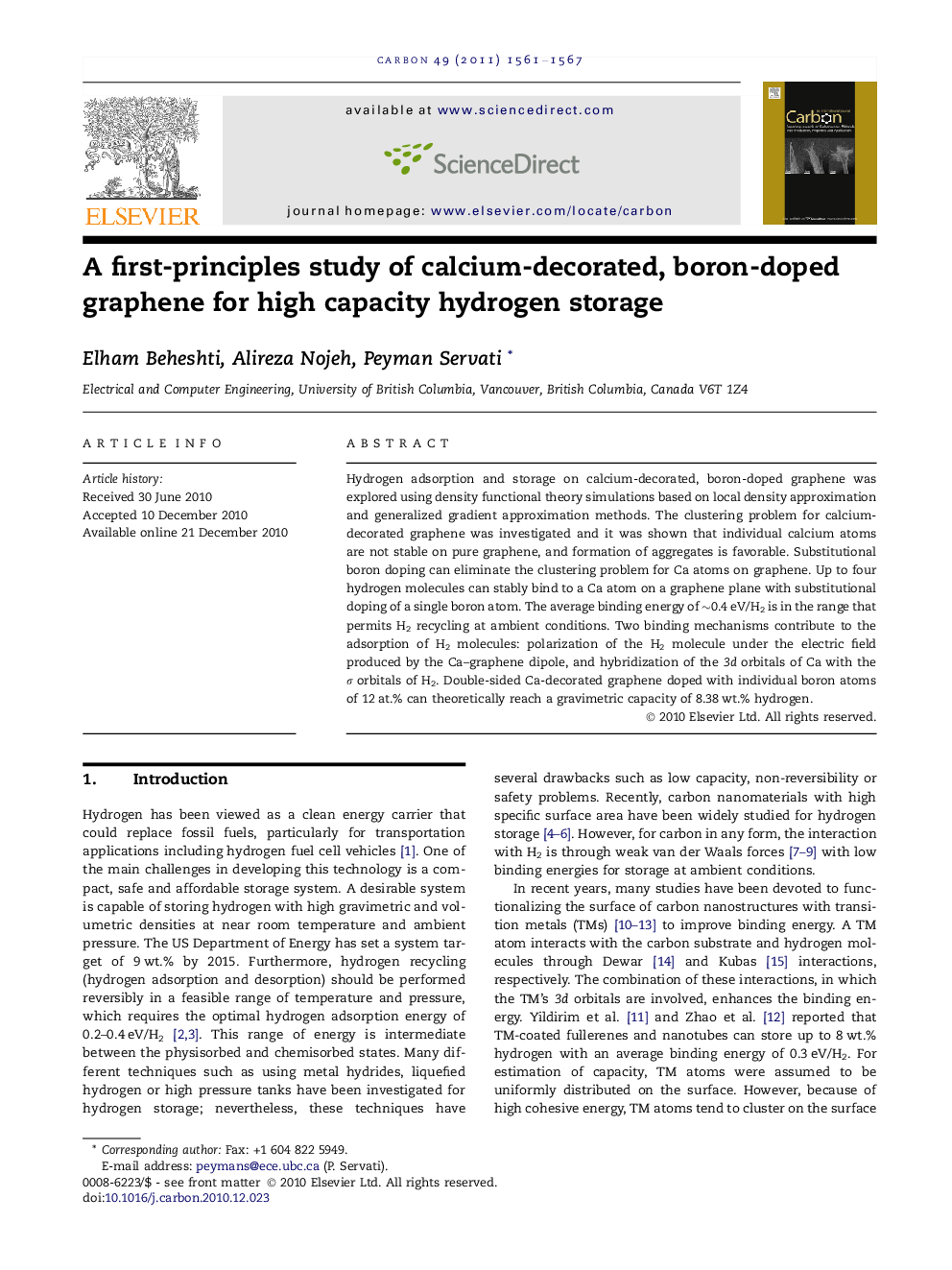| Article ID | Journal | Published Year | Pages | File Type |
|---|---|---|---|---|
| 1415064 | Carbon | 2011 | 7 Pages |
Hydrogen adsorption and storage on calcium-decorated, boron-doped graphene was explored using density functional theory simulations based on local density approximation and generalized gradient approximation methods. The clustering problem for calcium-decorated graphene was investigated and it was shown that individual calcium atoms are not stable on pure graphene, and formation of aggregates is favorable. Substitutional boron doping can eliminate the clustering problem for Ca atoms on graphene. Up to four hydrogen molecules can stably bind to a Ca atom on a graphene plane with substitutional doping of a single boron atom. The average binding energy of ∼0.4 eV/H2 is in the range that permits H2 recycling at ambient conditions. Two binding mechanisms contribute to the adsorption of H2 molecules: polarization of the H2 molecule under the electric field produced by the Ca–graphene dipole, and hybridization of the 3d orbitals of Ca with the σ orbitals of H2. Double-sided Ca-decorated graphene doped with individual boron atoms of 12 at.% can theoretically reach a gravimetric capacity of 8.38 wt.% hydrogen.
